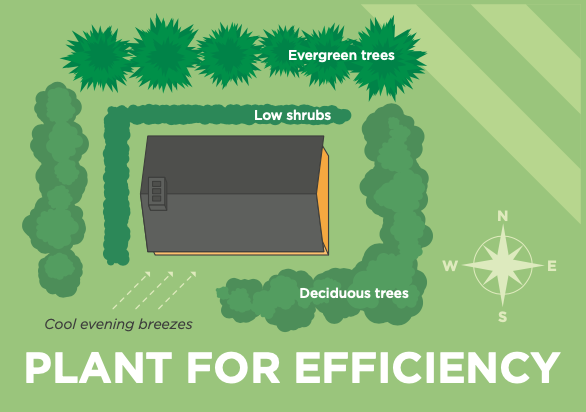Well-designed landscape saves energy

How can we design our landscaping so that it will lower our home’s monthly energy bill?
The decisions you make about your home’s landscaping can help you stay cooler in the summer and warmer in the winter. With summer just around the corner, let’s start by looking at how strategic planting can help cool your home.
Direct sunlight hitting windows is a major contributor to overheating your home during summer months. By planting trees that block sunlight, you can improve comfort and reduce your air conditioning use. If the trees eventually grow tall enough to shield your roof, that’s even better.
The most important windows to shade are those facing west, followed by windows that face east. Morning and evening sunlight hits the home more directly than midday sunlight. Also, an eave on the south side of your home can help shade your windows during midday sun.
These same trees, if deciduous, allow sunlight in during the winter after their leaves fall, helping to warm the home. A simple approach that can deliver some shade the first year is to plant a “living wall” of vines grown on a trellis next to your home.
Natural insulation
In the winter, a wind break can cut cold, harsh winds. The best solution for this is a solid row of trees, preferably evergreen, on the windward side of the home, with shrubs under the trees to keep the wind from sneaking through. But this comes with a caveat: that same natural barrier can block the wind flow that can cool your house in warm weather.
In cooler climates that aren’t too humid, homeowners can plant a row of shrubs a foot from the home. These can stop air movement, forming a dead air space around the home that acts as “bonus” insulation. In a humid climate like Kentucky’s, however, leave several feet of space between landscaping and the home, as air flow is necessary to avoid moisture-related home damage.
While working on the landscaping around your house, you also could do a bit of multitasking: Add some foundation insulation if you have a home with a basement or if it’s built on a slab.
PAT KEEGAN and BRAD THIESSEN write on energy efficiency for the National Rural Electric Cooperative Association.

